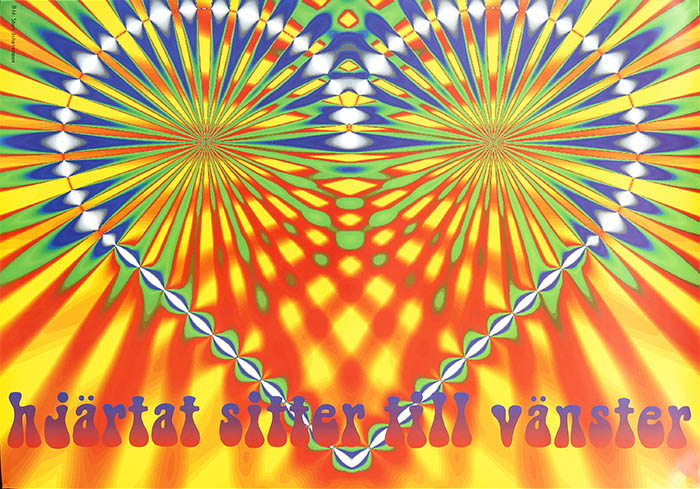Sture Johannesson
Sture Johannesson was one of the artistic guiding stars of the 1960s and 70s political Swedish underground movement, famous for the poster "Haschflickan". He was in constant conflict with the Swedish authorities and the art establishment.
Johannesson began his artistic career in the 1950s as an assistant to photographer Georg Oddner. In the mid-60s, he began making political posters: one of them was "Freedom on the Barricades II", known as "The Hasch Girl", a paraphrase of Delacroix's 1830 painting with the same name. Johannesson made the poster for 'Underground', an exhibition about Swedish underground aesthetics, which took place at Lund Art Gallery in 1969. As a consequence of the drug propaganda depicted in the poster, the exhibition was cancelled. Following a decision by the president at Konsthallsnämnden, Torsten Andrée, the director of the gallery Folke Edwards, had to resign. The quarrels about "The Hash Girl" resulted in Johannesson's poster "Andrée Will take a trip, from 1969.
Johannesson's interest in making political posters continued with 'Stop the Game' which he made during the protests against Sweden's Davis Cup game against Chile in Båstad in 1975. During the same period, Johannesson became interested in using computers in art creation. 1969 he began a collaboration with Sten Kallin at IBM. One of Johannesson's early works made with the help of a computer was the album cover for Pep's Blood Band's debut album in 1974.
Sture and his wife Charlotte became pioneers in computer-based art, both in Sweden and internationally. Together they made several trips to the United States, where they met Steve Wozniak, one of the founders of Apple, who helped them with technical equipment. During the early 1980s, Sture and Charlotte Johannesson's artist collective Digitalteatern in Malmö had one of the most advanced Apple systems. It was the first digital studio in Sweden, where the couple created the portrait suite with Björn Borg, Boy George, David Bowie and Ahmed Shah Massoud.


























